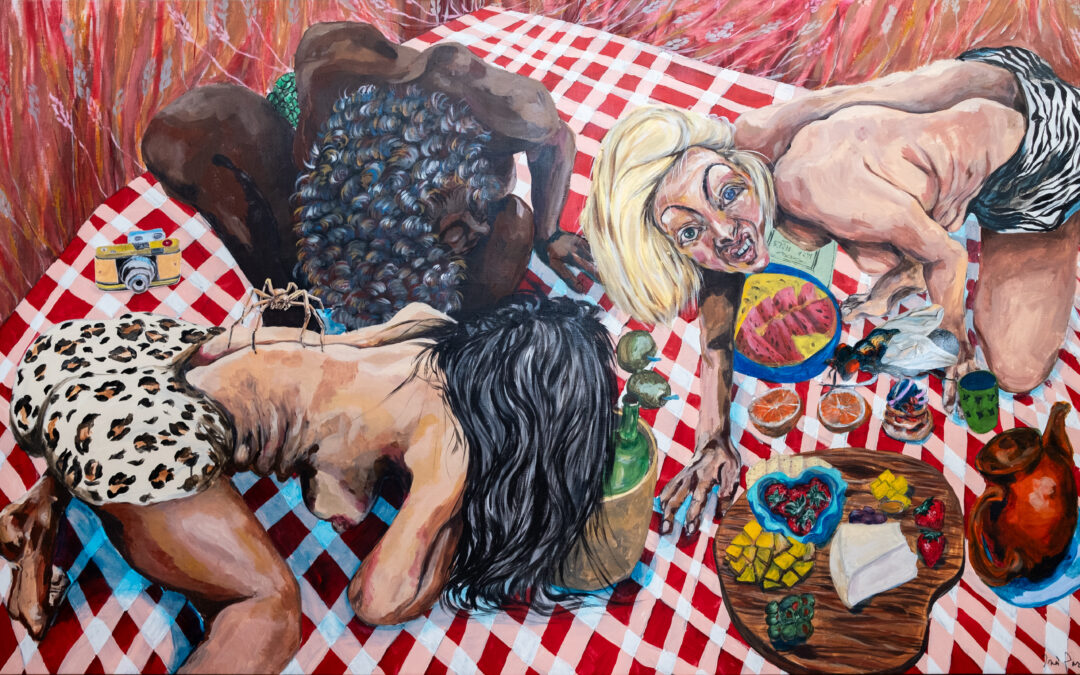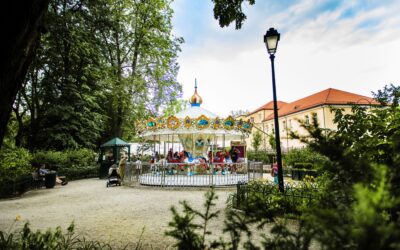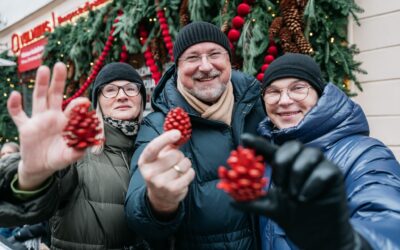Inês Pargana is a Portuguese visual artist. She holds a degree in architecture and worked in the field for more than a decade before fully embracing the world of art, painting, and drawing. Combining solid technical skills with an expressive visual lexicon, the artist proposes unexpected and surprising approaches. The images captivate us with representations of enigmatic female characters in situations of discomfort. Our reaction is one of curiosity, voyeurism, or even repulsion. Who are these women? What is happening here? How do I feel? We are thus called to bring our personal experiences, our values, and our prejudices to the forefront, seeking a comforting answer about what we see.
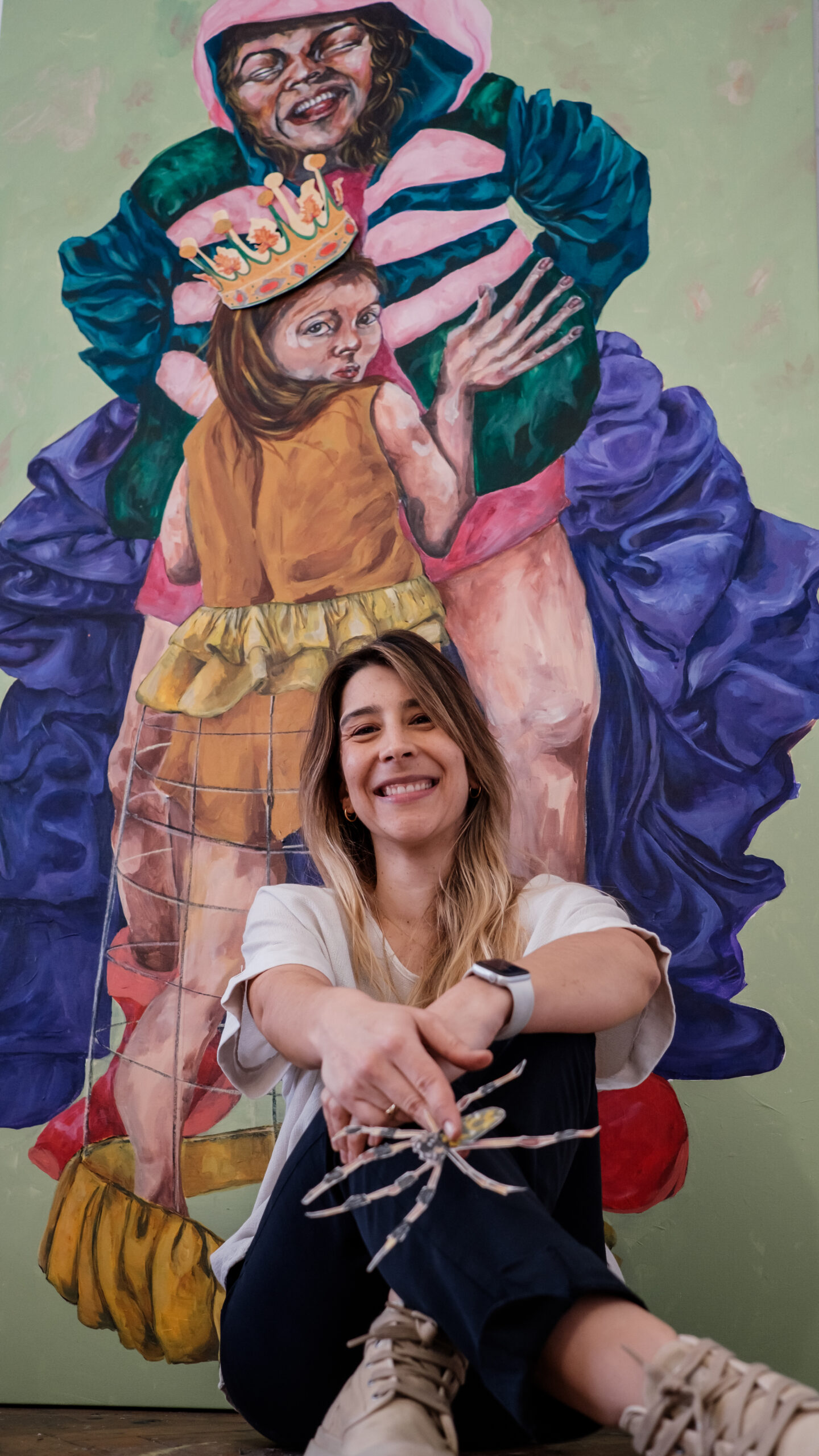
Pargana’s paintings are spaces of psychoanalysis, where technique, material, or even dimension are not the main focus, but rather the constituent elements of the diverse compositions of a submerged world, here made visible. There is a naturalness, deliberately removed from traditional aesthetic canons, in the exaggeration of grotesque forms that bridge the eccentricity of Hieronymus Bosch with the blunt frontality of Paula Rego’s figures. In this dynamic of haunting between the female figures, primarily, allied with small repulsive animals that produce the shiver of a certain anguish, by surpassing what is ethically correct, the scandalous, the perverse, the exorcism of the deepest side of the human mind is provoked.
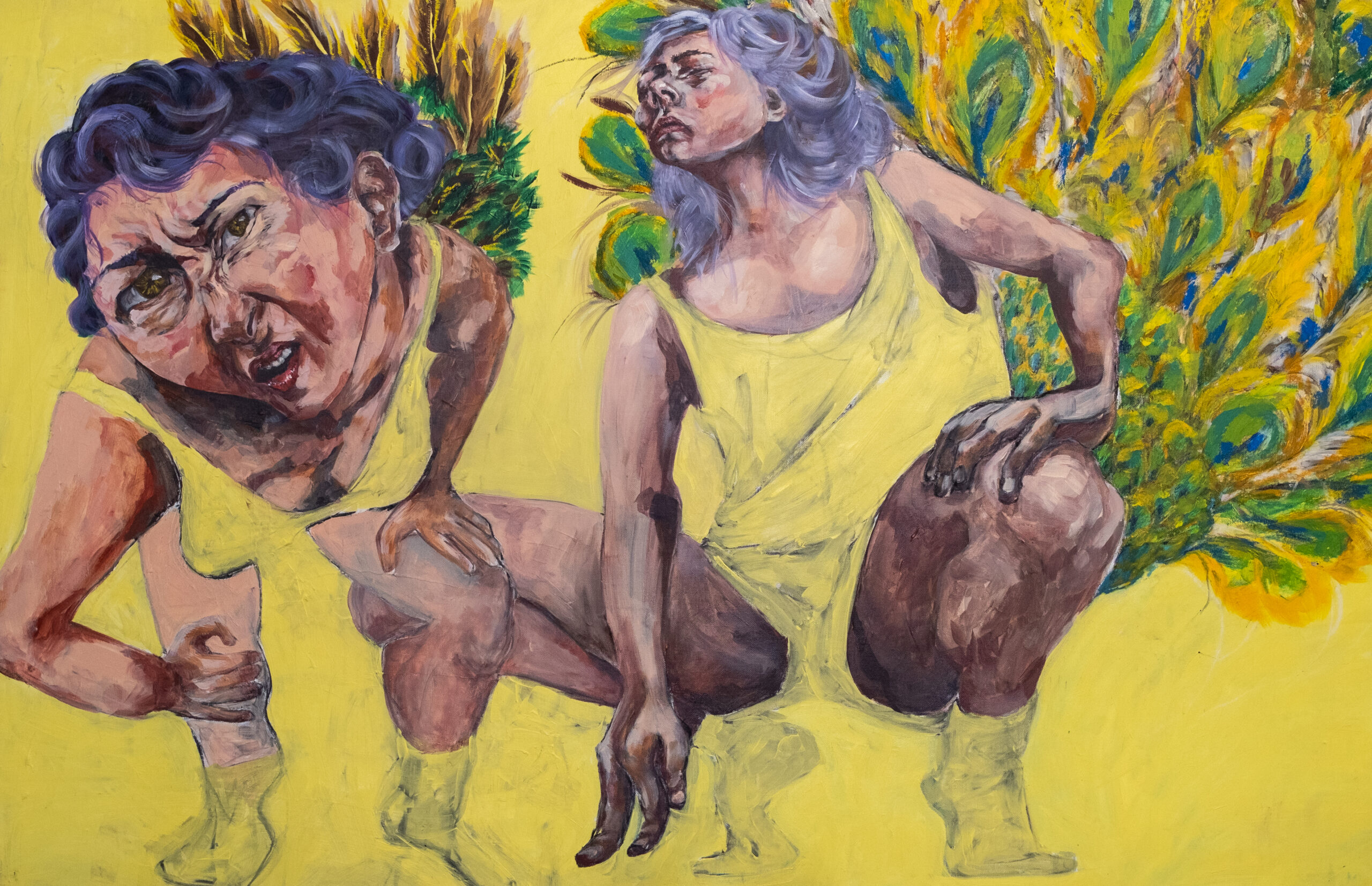
Only by externalizing the inner world can this liberation from intuitive vulgarity, without filters, of these figures be analyzed. Here, common sense is reflected and observed without barriers, in perfect harmony with a raw, unpolished reality of a raw material in its natural state. These are the reflection of a current time, where obstacles are destroyed for a better understanding of the human being, in confrontation with its own contradictions and controversies. She has held several solo and group exhibitions in museums and galleries in Portugal. Her works, both nationally and internationally, spark conversations with their ‘tenants’. Inês invites you to join her journey and become part of her work by following her on social media. Through these channels, you can interact directly with her, gain insights into her creative process, and become part of the broader community surrounding her work.
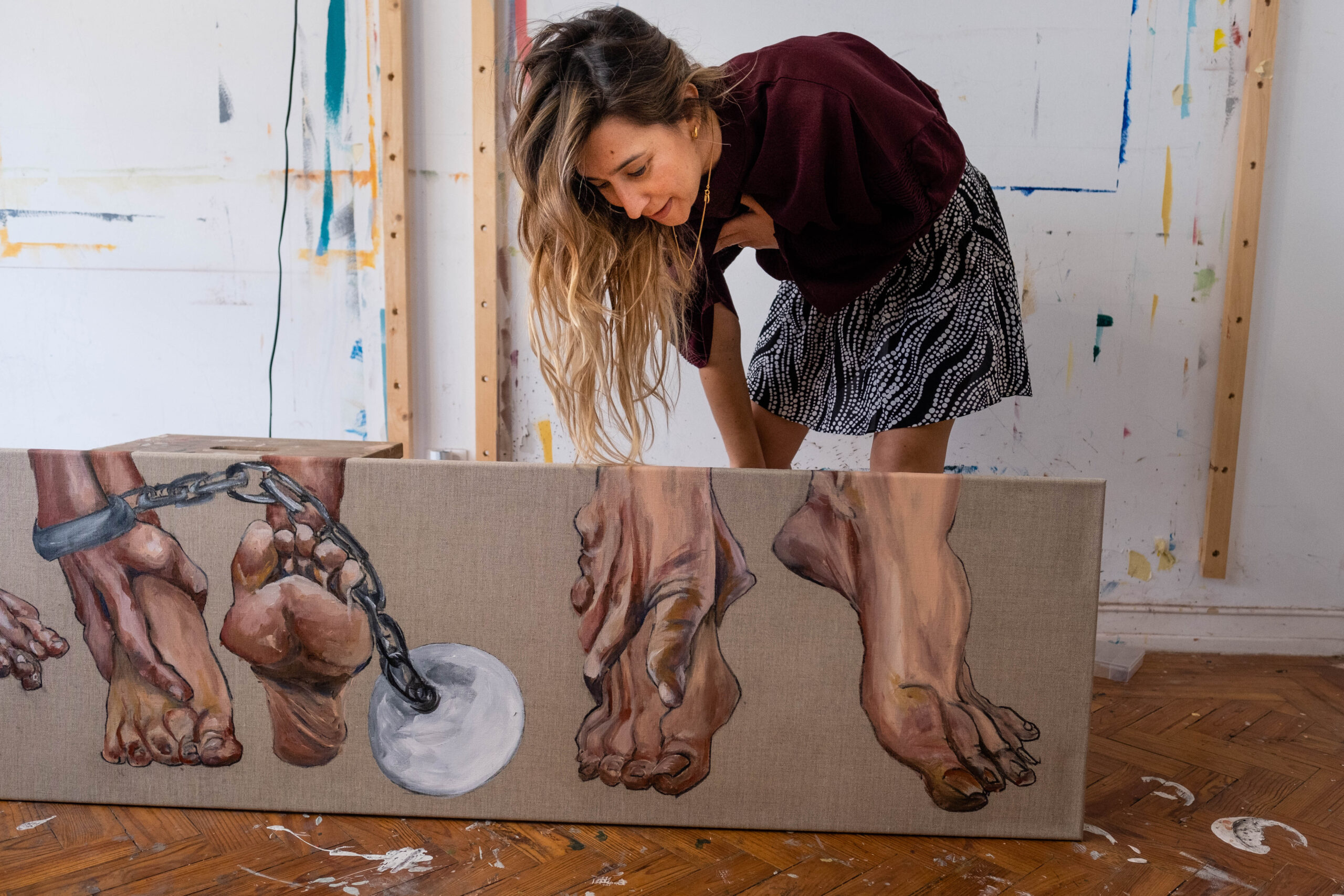
What’s your artistic background?
I graduated in architecture in Lisbon. The Architecture University in Lisbon has a strong artistic component. I had drawing classes in college for several years. I took a nude model course at AR.CO and three years of an oil painting course at NEXTART. I attended nude model classes at the Complutense University in Madrid when I lived there.
What’s integral to the work of an artist?
The most important thing for an artist is to not be afraid of making mistakes and to always keep experimenting with new things, even when it seems that we have reached a place that satisfies us. Not being afraid of making mistakes and trying different things is what people usually mean by ‘having a knack for art.’ (I am a strong critic of the idea of innate talent.)
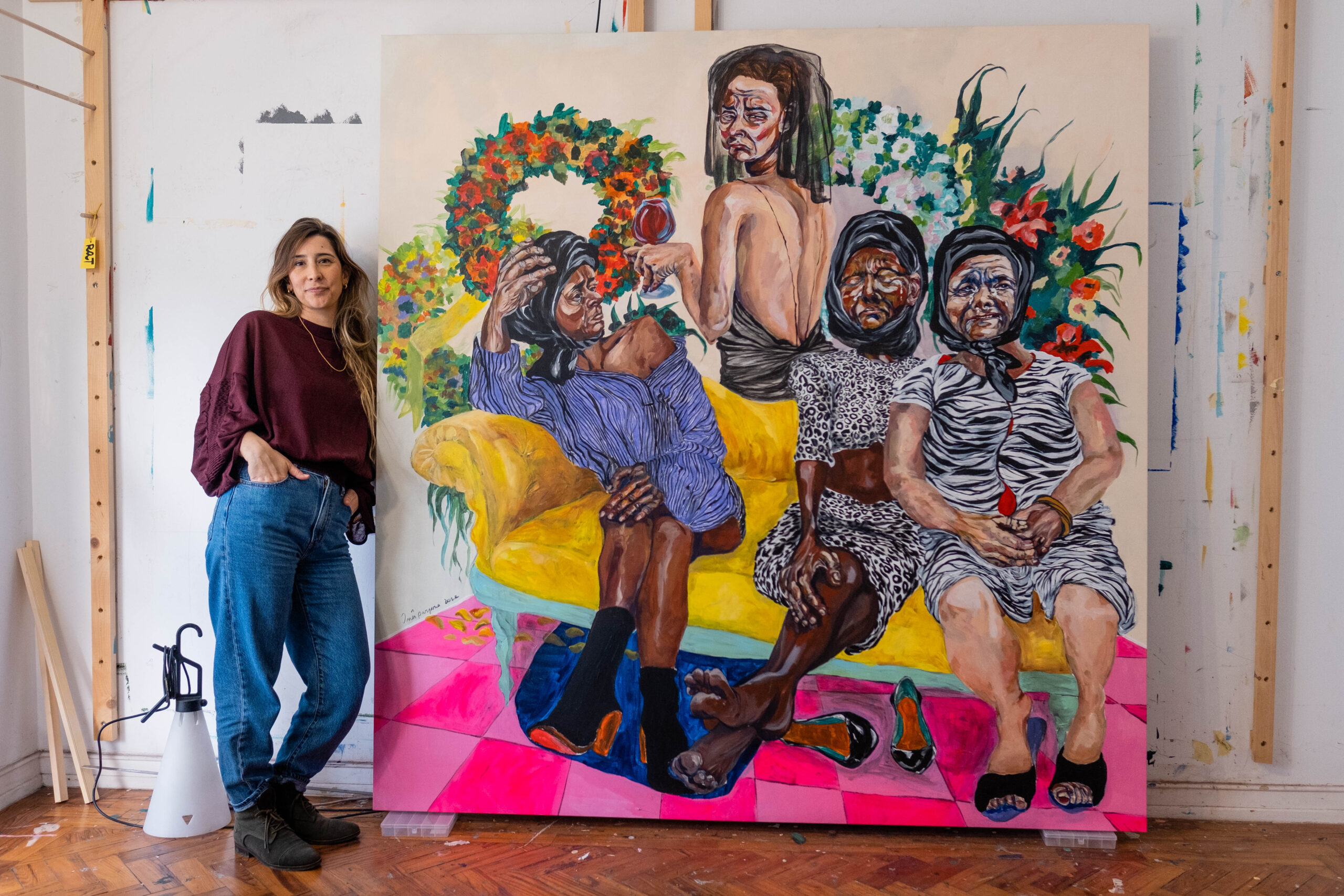
What role does the artist have in society?
I have a fascination with rock art. Not only do I find it aesthetically wonderful, but I am also moved by thinking about those first humans who became human at the same time they became artists. Art seems inseparable from humanity. Art continues to be the most beautiful way we have to communicate with each other. It makes society more empathetic (which we greatly need), more inspiring, more beautiful, and happier.
What art do you most identify with?
I identify with expressionist art. I am interested in emotions. I like intense colors and bold combinations. I enjoy the gestural and spontaneous nature (probably in opposition to what I most dislike in architecture – the precision and detail). I like the dynamic and energetic aesthetics.
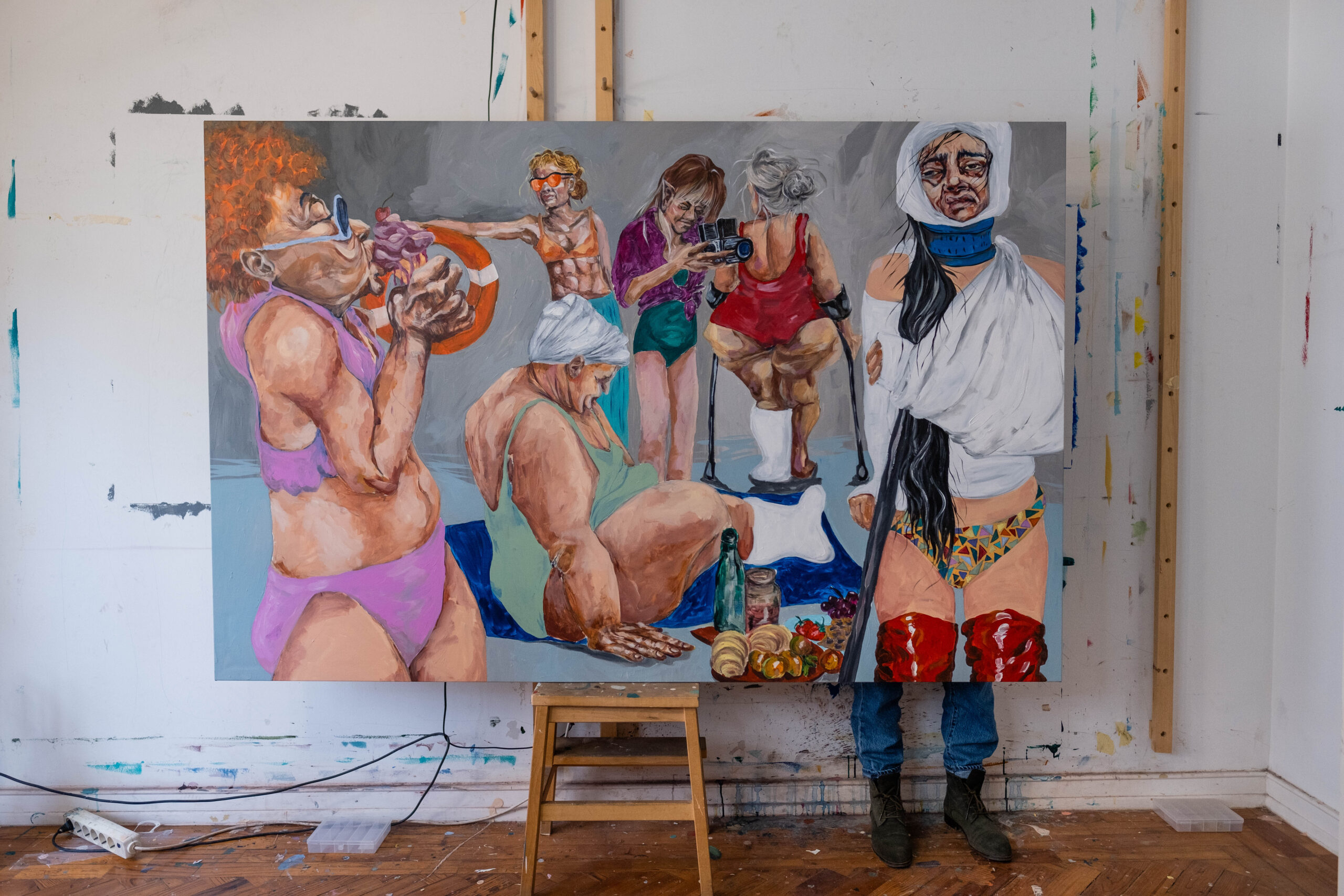
What themes do you pursue?
I am interested in people and their stories. I realized later that all my artistic training was already seeking the human figure, and I still want to paint people, their faces and their bodies. I have been interested in painting people who belong to a world where they are wilder beings than we are here in this world. (I paint figures that seem to exist in another dimension, so I often speak of there and here). They are always women; I don’t know why, but they always appear to me as female, and I just give them an image here on this side. Sometimes I know where they came from, other times I don’t.
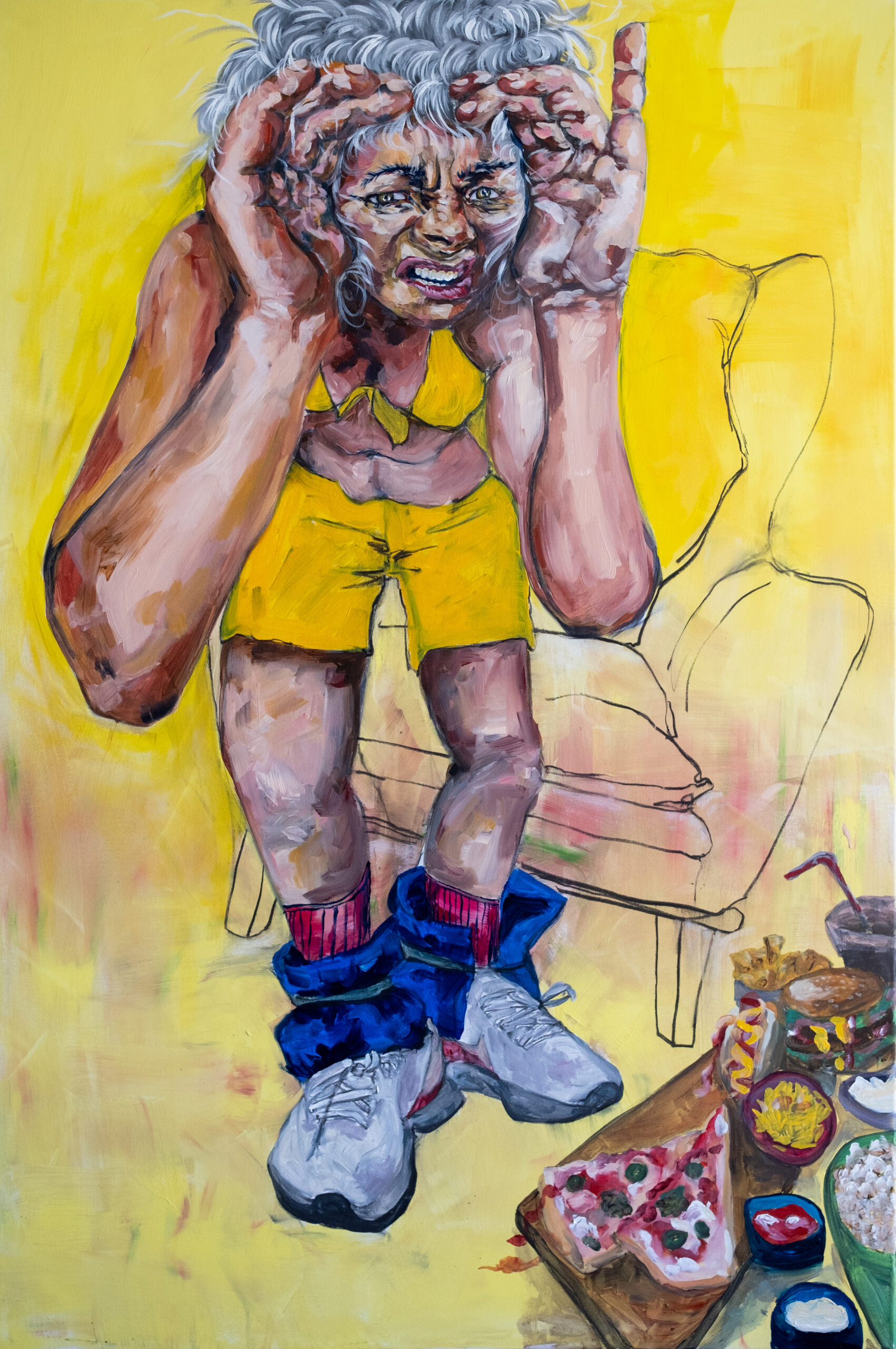
What’s your favourite art work?
The one I stand still and stare at, losing myself in it and abstracting from what is around me.
Describe a real-life situation that inspired you?
Very recently, I painted a canvas (currently on display in Lisbon, at Palácio Galveias Library) inspired by an episode from my childhood: I didn’t like to eat. My parents say I survived on air (and soup, which I always liked). My parents were worried and afraid that I would stay small (which I did) and malnourished. One day, when I was 6 years old, my best friend and neighbor invited me to her birthday party, which coincided with Carnival. As I was very vain, I always dressed up as a princess. I was eager to go to her party with my rented dress with a crinoline imitating Victorian dresses, but when it was time for the party, I still hadn’t finished lunch. My mother forbade me from getting up the table before I finished eating. My friend’s aunt came to my rescue, feeding me and convincing me to finish the ordeal. I managed to go to the party, and it was a lot of fun.
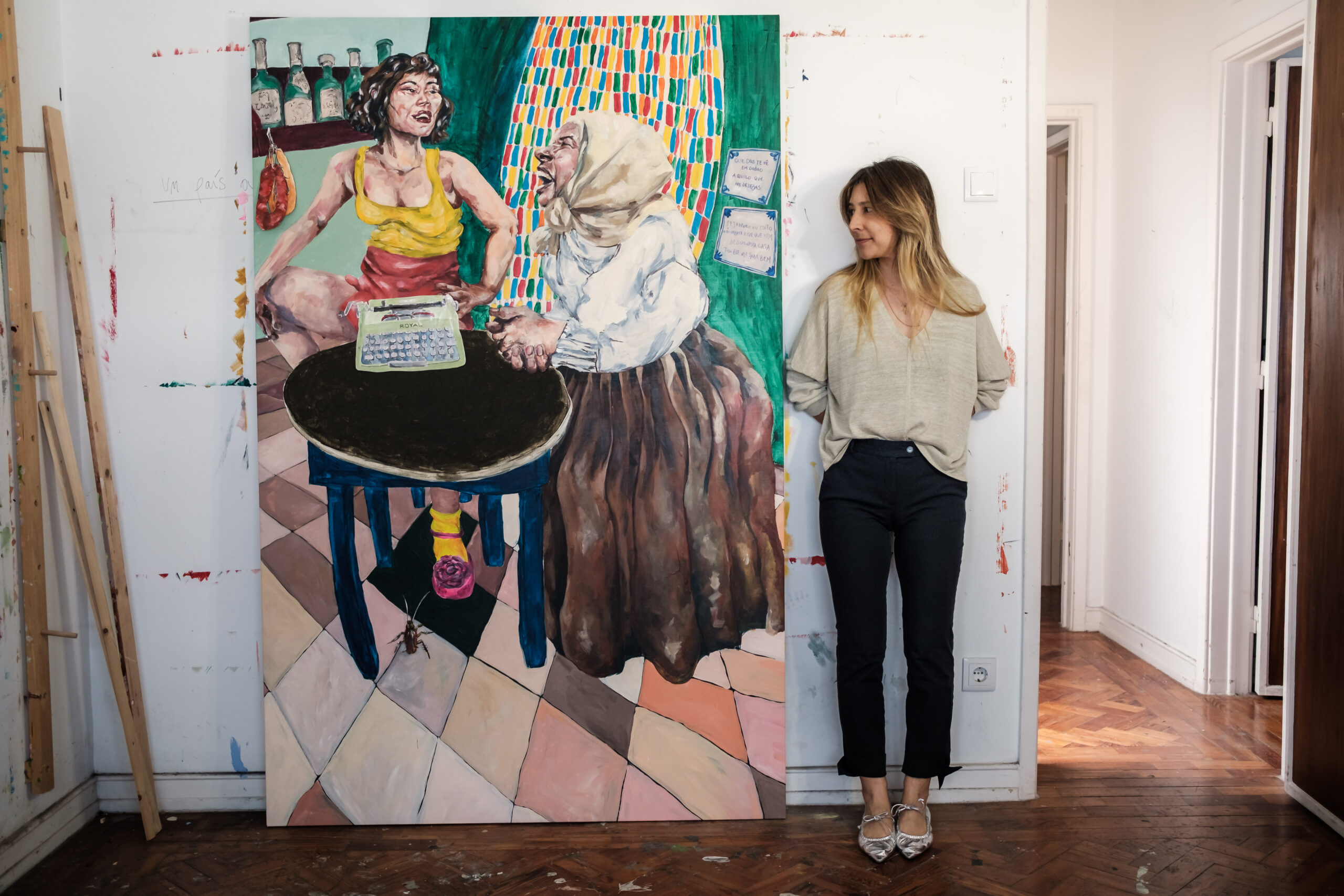
What jobs have you done other than being an artist?
When I chose my degree, I was very undecided between painting and architecture. I ended up choosing architecture and worked as an architect for more than a decade. During this time, I took several painting and drawing courses and never stopped doing artistic work, but I did not do it professionally. Architecture was very important, and even today I believe that, although I don’t feel like an architect, I am imbued with all the work processes I learned in college and used during that time.
Why art?
It was never a conscious choice. I feel it as a necessity, like a ‘calling.’ My most unhappy and empty times were when I was an architect and didn’t have time to create. (Contrary to popular belief, architecture can be a rather bureaucratic and uncreative discipline).
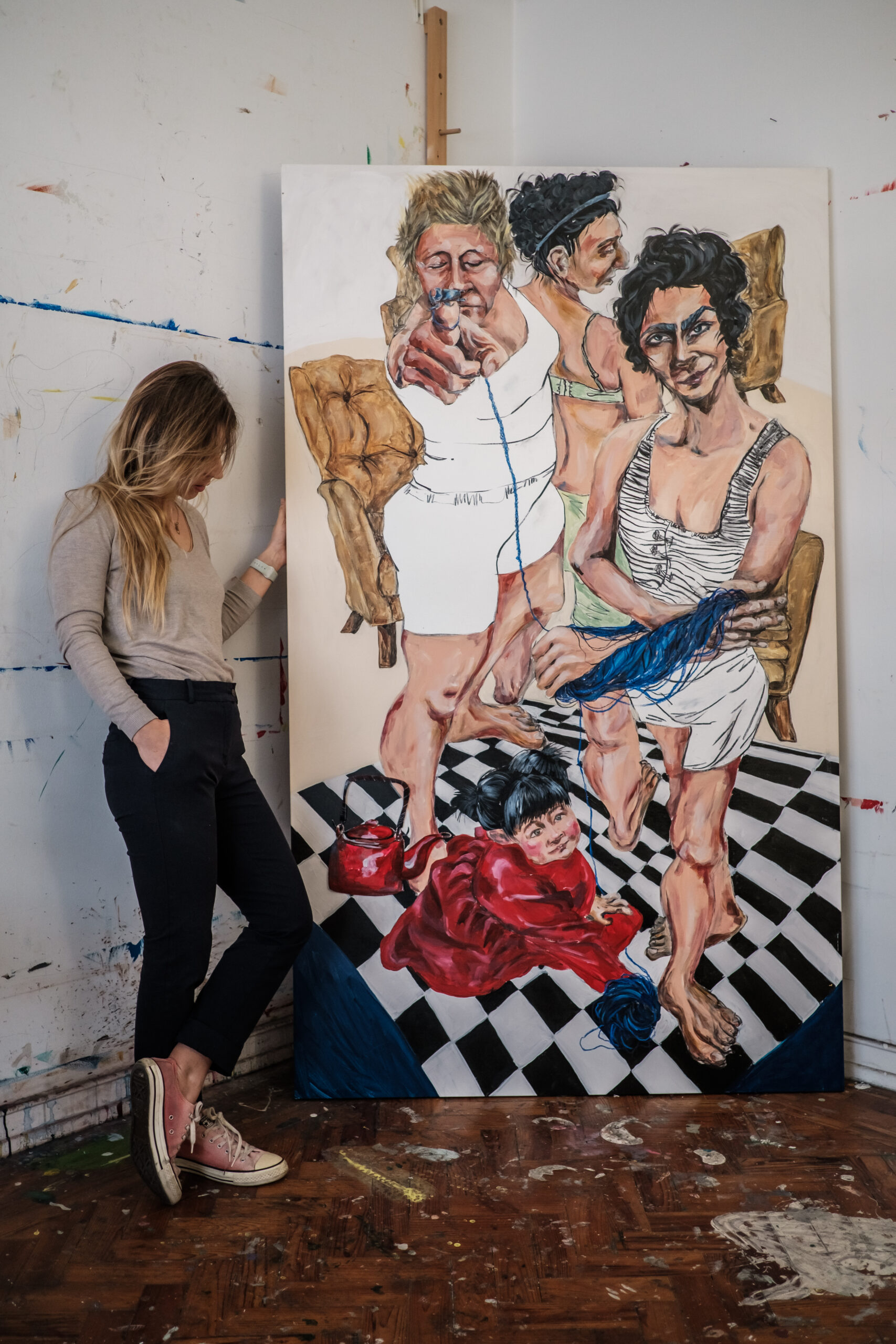
What is an artistic outlook on life?
To experiment, without the fear of making mistakes. Furthermore, to know when to stop, to appreciate, to look, to think without having to turn everything into ‘production.’ For artistic work, stopping is fundamental (and I suspect in life in general as well). Two-thirds of my time in the studio is spent looking at what I’m doing. Outside the studio, we should do the same. It helps me understand where I want to go.
What memorable responses have you had to your work?
I like to listen to what people say when they don’t know that I am the author and they comment on my work casually. It almost always evoke strong feelings, whether they like it or not. Some time ago, I came across a man at one of my exhibitions who thought I was a visitor like him. He commented to me on how powerful those paintings were, how they evoked such ambiguous feelings in him… I was pleased…
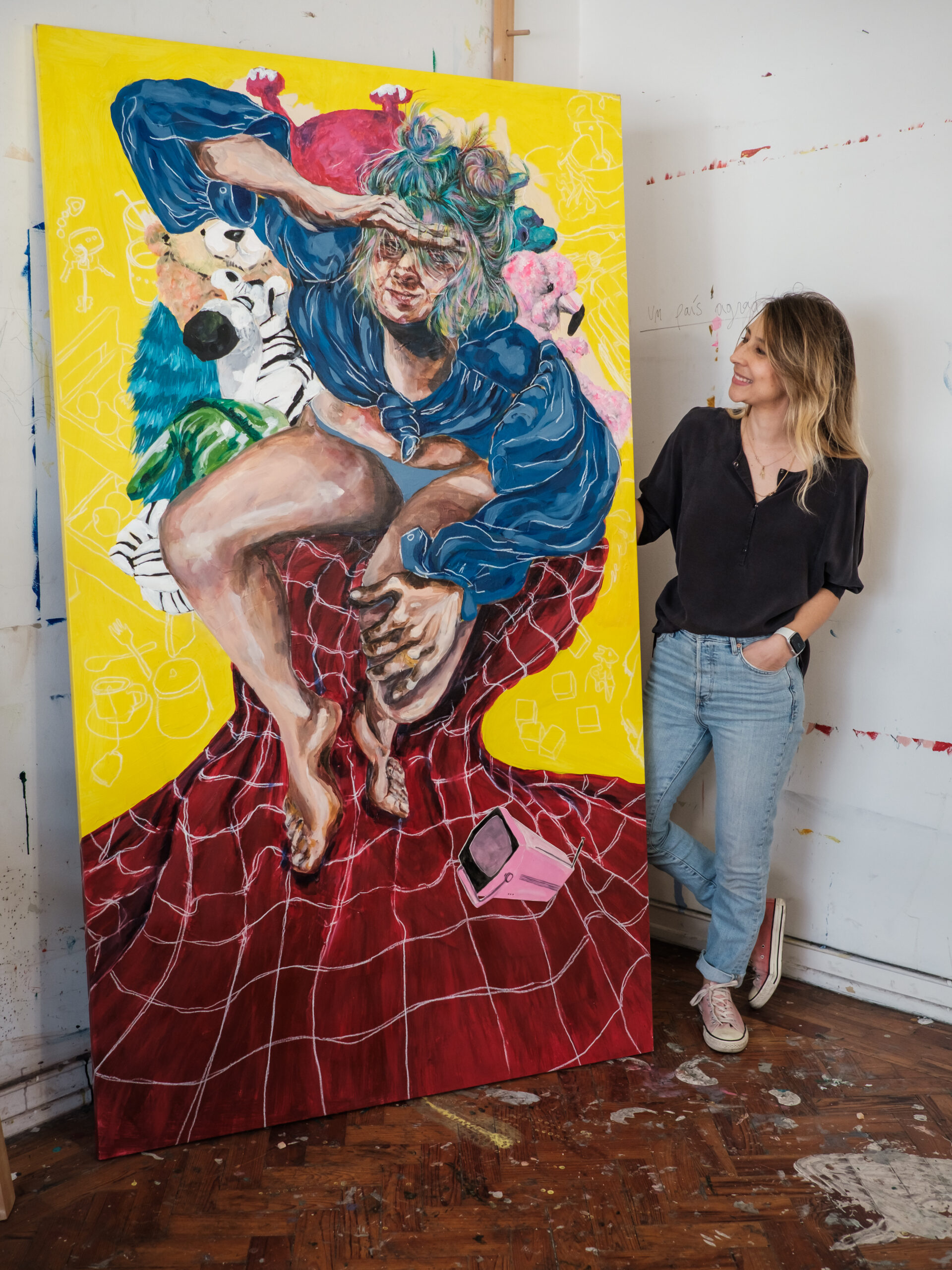
What food, drink, song inspires you?
More than food, drink, or music, what inspires me is doing it together. My moments of fulfillment are during the sharing of food and drink with people I love. Whether it’s a fish lunch, a meat dinner, or a cake snack, what inspires me most is being with my people, relaxed and chatting.
Is the artistic life lonely? What do you do to counteract it?
A bit, but I’m fortunate to have some very present friends who accompany me during the creative process and whom I turn to for ‘thinking’ out loud. They help me a lot and are fundamental for not feeling the typical ‘loneliness’ of the artistic creator.
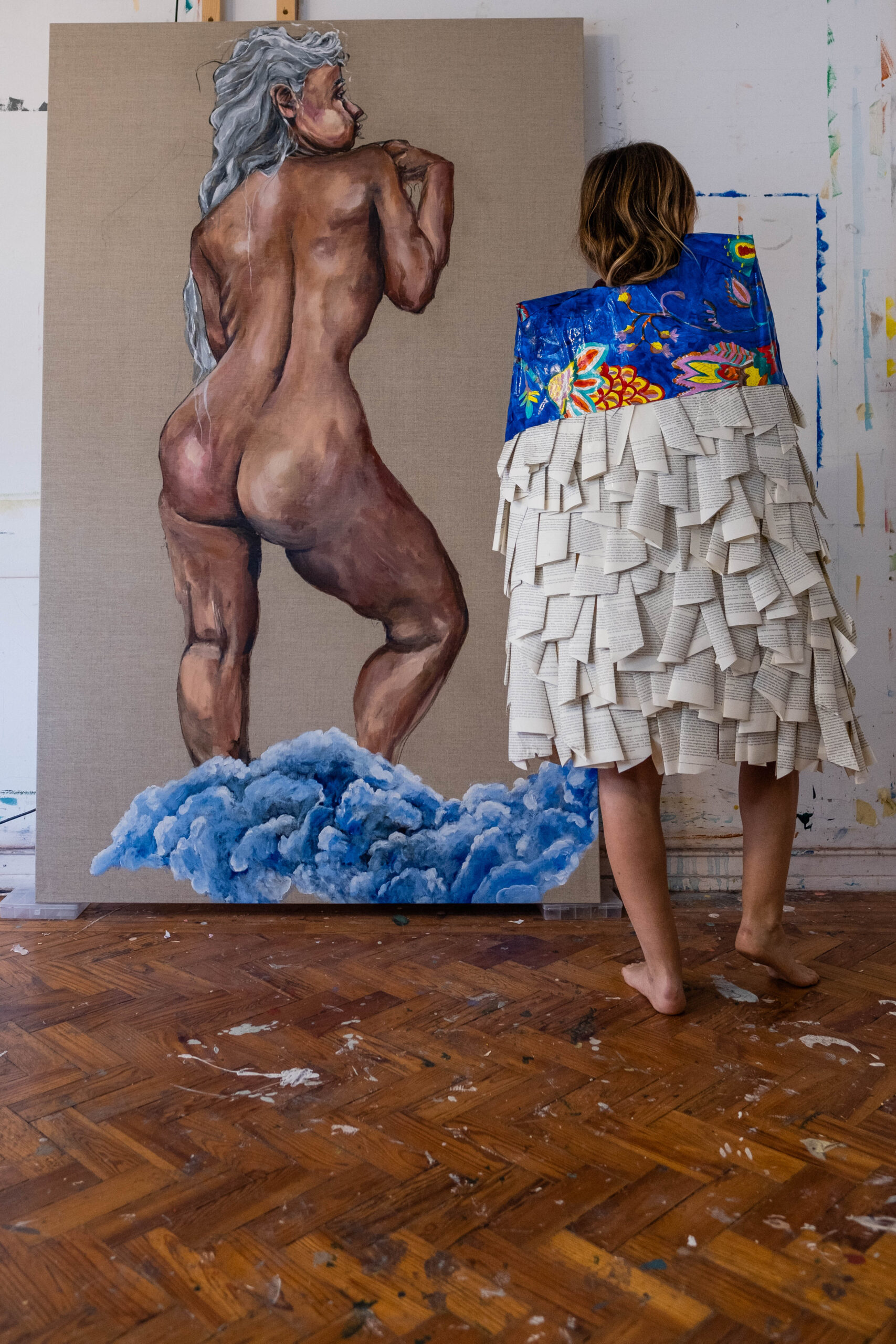
What do you dislike about the art world?
I don’t like it when it becomes pretentious. I don’t like hearing so many people say they don’t understand anything about art. Art is a form of intuitive communication. There are no experts or non-experts. Art is for everyone; it should not be turned into a luxury object that makes people uncomfortable.
What do you dislike about your work?
I’m always concerned about financial instability. It’s a very insecure professional life with little financial return.
What do you like about your work?
I like it when it communicates with people. Whether because they like it a lot or because it’s a bit bothersome, in most cases, people somehow relate to my work. That’s the most important thing for an artist.
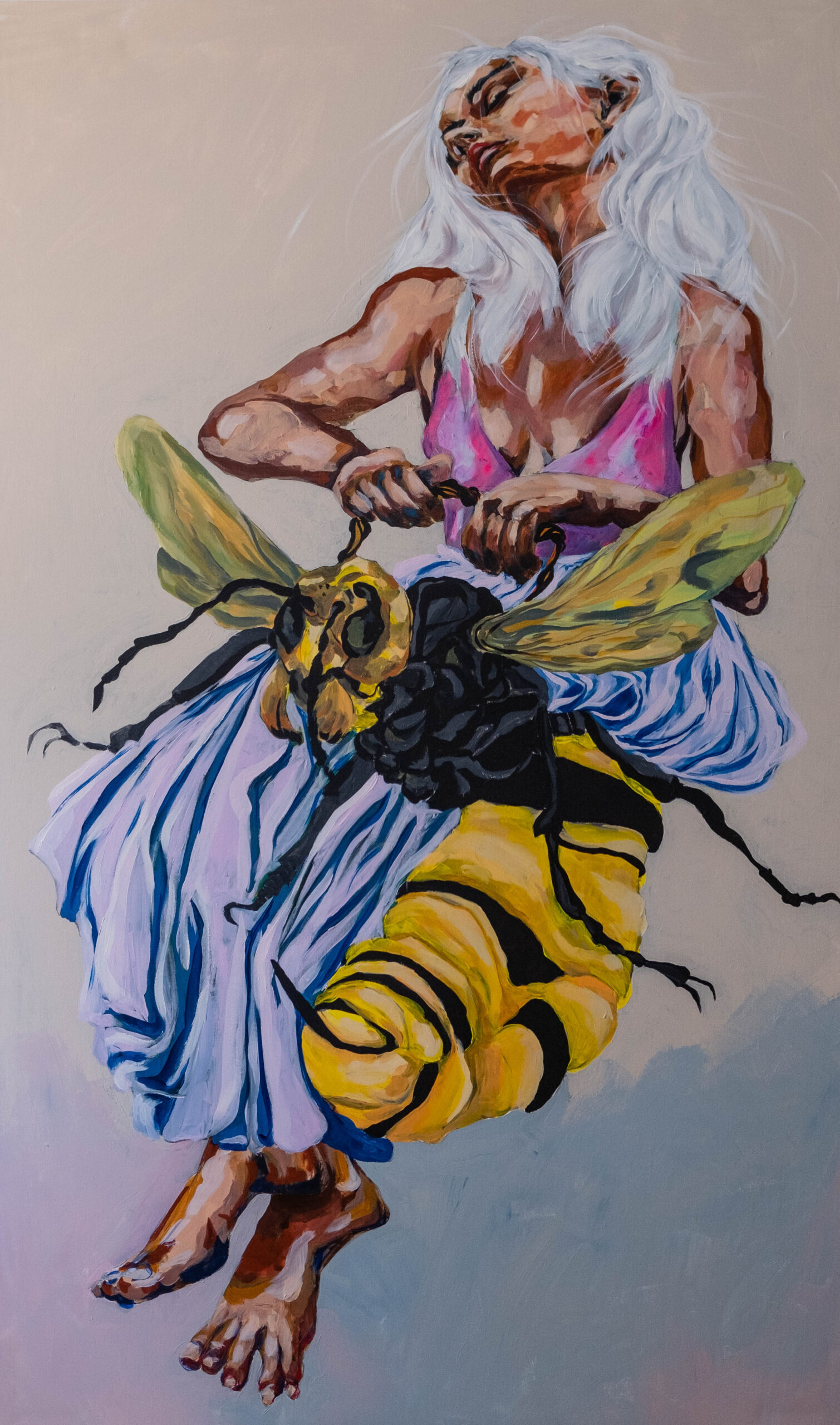
Should art be funded?
Yes, art should be funded. All culture is fundamental for a civilized and advanced society. Culture plays an important role in promoting dialogue, building bridges between different communities, and fostering social cohesion. When there is a discipline of such importance that does not have immediate utility and does not generate money, funding should be ensured so that everyone has the opportunity to benefit from it. Societies with access to art become better societies.
What role does arts funding have?
It allows artists to create without worrying about what is marketable.
What is your dream project?
Fortunately, I have had the opportunity to work on projects created by me that fulfill me completely. I have been able to work with people I admire. When I have an idea for a dream project, I move forward, and so far, I have always been able to realize them.
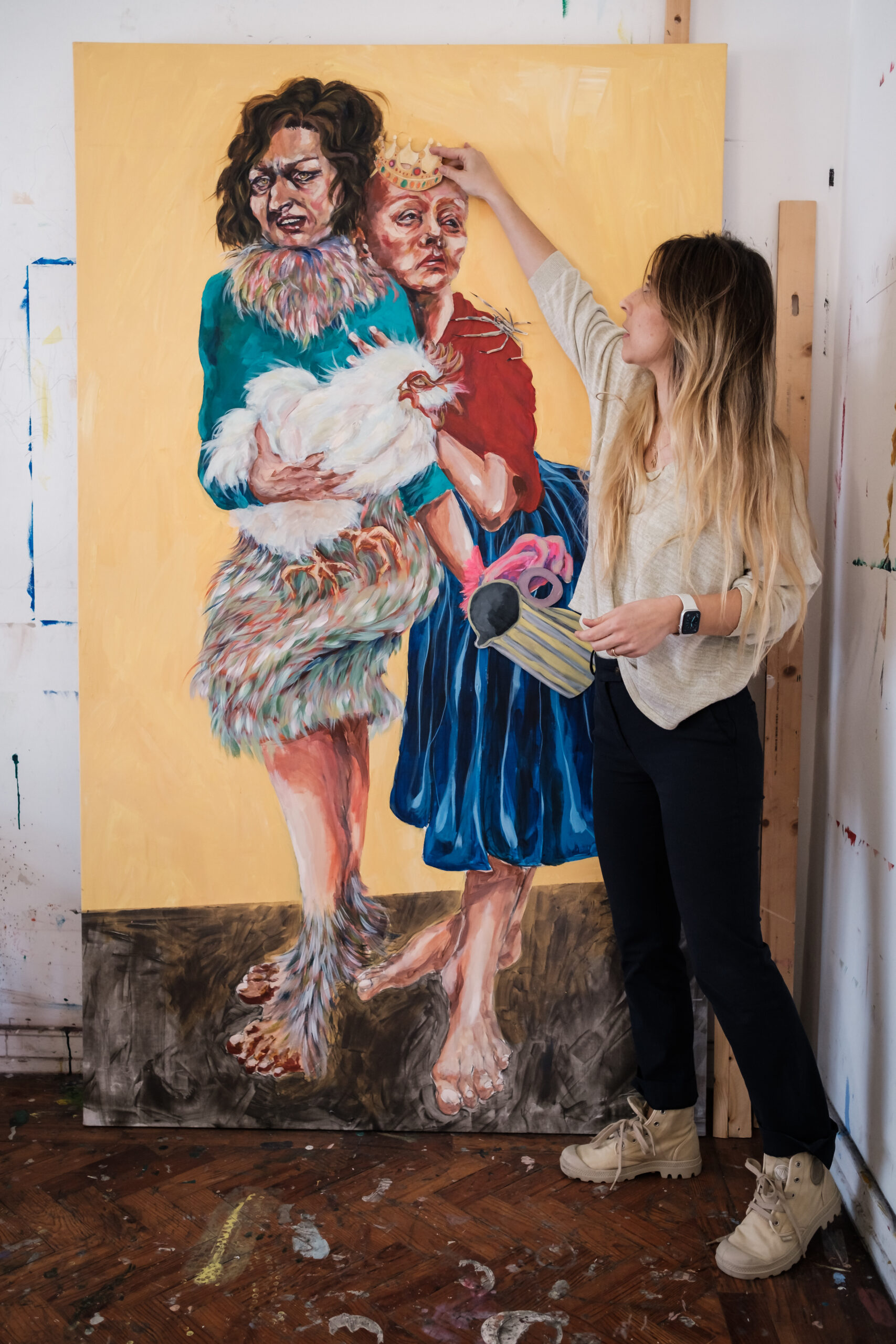
Name three artists you’d like to be compared to.
Lucian Freud, Egon Schielle, Andrew Salgado
Favourite or most inspirational place ?
The Azores. I did a series of paintings inspired by the people of those mysterious, somewhat ghostly islands. I think it’s my favorite place in the world. I haven’t been to all nine islands, but in all the ones I’ve been to, I feel like I belong there.
What’s the best piece of advice you’ve been given?
People often give me advice. It’s almost always well-intended, but I think the best advice comes from me and my personal growth and maturity: “it doesn’t matter what others think”.
Professionally, what’s your goal?
Continuing to work and to keep challenge myself.


